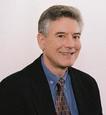To some degree discs lose their flexibility, elasticity, and shock absorbing characteristics as we age as do the other tissues in the body making them susceptible to injury.
The back is a complicated structure of bones called vertebrae separated by cartilage-like shock absorbers called discs, held together by ligaments and muscles. It must be flexible enough to provide a wide range of movements and yet strong enough to protect the spinal cord and the delicate nerve fibers which exit between each vertebrae. The spine functions as a whole, so if we have mechanical disturbances in one part of the spine, even as far away from the low back as the neck, it can influence conditions in another area of the spine. Imbalances in the pelvis, problems in the sacroiliac joints, facet fixations, as well as joint restrictions in the mid-back and the neck, can contribute to weakening of the vertebral joints and make discs susceptible to injury. Back pain can be caused by any combination of sprained ligaments, strained muscles, herniated discs, pinched nerves, and irritated joints, any or all of which can lead to pain. A herniated disc most often occurs when a number of these and other factors act together resulting in mechanical injury.
Of course your spine could be normal in every way and become injured in a fall, accident, or sports injury with an impact severe enough to herniate even the healthiest disc. More often, however, weaknesses from lesser, earlier injuries accumulate and compound as the years go by so that eventually the simplest of movements - for example, bending over to pick up your shoes from the floor - can have painful results. In addition, arthritis, poor posture, lack of exercise, weight gain, and even psychological stress can cause or complicate back pain. Most back pain is mechanical in nature. Less frequently back pain can also directly result from medical pathology such as kidney stones, infections, blood clots, bone loss (osteoporosis), and others. A complete history and a thorough examination can rule in or rule out a wide range of possibilities.
To some degree discs lose their flexibility, elasticity, and shock absorbing characteristics as we age as do the other tissues in the body making them susceptible to injury. Abnormal or excessive mechanical stresses or injuries of the past coupled with weight gain, poor health habits, and lack of exercise can rapidly accelerate this degenerative process. As the involved disc dries out and loses height (a process known as desiccation) it causes the vertebra to become closer together narrowing the channels through which the nerve roots pass. A dry, hard disc can absorb less shock and is thus more easily torn resulting in a greater likelihood of a simple movement that wouldn't ordinarily injure a healthy disc resulting in a herniation or bulge of a degenerated disc. The bulge or herniation of course takes up space in the nerve channel further compressing or pinching the nerves. As the stress on the joint compounds and osteoarthritis begins to result, bone spurs form and ligaments thicken (hypertrophy) gradually narrowing the nerve channels even further. These factors in various combinations and degrees of severity compromise the space in the nerve channels, a condition known as spinal stenosis (narrowing), and conspire to compress (pinch) the nerves. The end result is pain.
AUTHOR BIOGRAPHY
Dr. Michael L. Hall, D.C. practices at Triangle Disc Care in Raleigh, North Carolina specializing in Spinal Decompression for the treatment of acute and chronic neck pain and back pain due to herniated, degenerated discs. This is a conservative procedure for patients suffering with bulging or herniated discs, degenerative disc disease, posterior facet syndrome, sciatica, failed back surgery syndrome, and non-specified mechanical low back or neck pain.
For more information call 919-571-2515, click on www.triangledisc.com or email office@triangledisc.com. Type "Free eBook - 101 Things I Need to Know about my Bad Back" into the subject line.

Post new comment
Please Register or Login to post new comment.